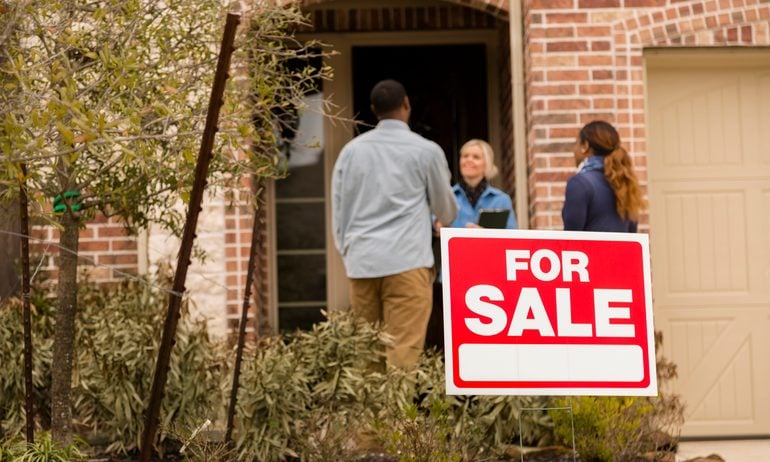20% Down? The Myth That Could Be Holding Home Buyers Back
More than half of Americans still think a 20% down payment is required to buy a home. This longstanding myth could get in the way of homeownership goals.

Some or all of the mortgage lenders featured on our site are advertising partners of NerdWallet, but this does not influence our evaluations, lender star ratings or the order in which lenders are listed on the page. Our opinions are our own. Here is a list of our partners.
Scraping together a down payment for a home is a challenge, especially in today’s housing market. But one persistent financial myth could be making it harder than it needs to be.
According to NerdWallet’s 2025 Home Buyer Report, 62% of Americans say that a 20% down payment is required to buy a home.
But that’s not the case. And since 33% of non-homeowners say that not having enough money for a down payment is holding them back from buying a home at this time, according to the survey, this misconception could be stopping them unnecessarily.
There are many reasons you might want to put down 20% or more of the purchase price when buying a home. But you don’t have to, and many options exist for lower-down-payment home loans. If you’re one of the 15% of Americans who the survey says plan on buying a home in the coming year, it could pay to know about them.
A surprisingly persistent myth
This myth prevails across the majority of age groups and educational levels. Even 60% of homeowners think a 20% down payment is required, according to the survey. This is surprising because the median down payment among all home buyers is under 20%, according to a survey conducted by the National Association of Realtors.
This myth has been with us for a long time — NerdWallet first asked about it in 2017 — and over the past couple decades homes have gotten much more expensive. In the 1990s, a 20% down payment on the average home sale was about 80% of the median annual household income. For the past few years, however, that same 20% down payment would require 100% or more of the median income. It’s not surprising, then, that the median down payment nowadays is 18% for all buyers and 9% for first-time buyers, according to the National Association of Realtors.
Loans with smaller down payments usually need special insurance
While a 20% down payment is not required to buy a home, smaller down payments often require a few extra steps. Lenders issuing conventional home loans typically require private mortgage insurance (PMI) if the down payment is under 20%.
PMI protects the lender by offsetting the additional risk a lender takes when it accepts a smaller down payment. If you stop making payments on the loan, this insurance can pay out a portion of what’s still owed to the lender. That said, if you default on your home loan, this insurance doesn’t protect you at all; defaulting will hurt your credit and put you at risk of foreclosure.
PMI is usually paid as part of your monthly mortgage payment; with a conventional mortgage, you can request the lender cancel it when you reach 20% equity on your home.
How low can you go?
The lowest down payment that lenders actually require depends on the kind of mortgage you’re getting. For example, Fannie Mae HomeReady and Freddie Mac Home Possible offer eligible buyers conventional mortgages with a 3% down payment.
FHA loans, backed by the Federal Housing Administration, can have down payments as low as 3.5%. USDA loans for people who live in rural areas, VA loans for veterans and some others require no money down (also known as a 0% down payment). However, in addition to mortgage insurance, these low-down-payment mortgages can have other upfront fees.
Down payment assistance programs — often grants or loans from government agencies — can also help cover some upfront costs of home ownership.
Larger down payments are still good, if you can afford them
That said, there are many benefits to larger down payments. The more money you put down, the less you’re borrowing — which means it’ll be easier to pay off, in smaller payments or over less time. A down payment calculator can help illustrate this.
A larger down payment might also be able to get you a lower interest rate. And putting more money down also means owning a larger share of the home’s equity right away. While a mortgage is debt, the equity you actually hold in the home is an asset.
While larger down payments are better for many reasons, they are not required to buy a home. And a lower down payment can leave you with more savings on hand. Having money set aside for unexpected expenses is especially important once you’re a homeowner.





